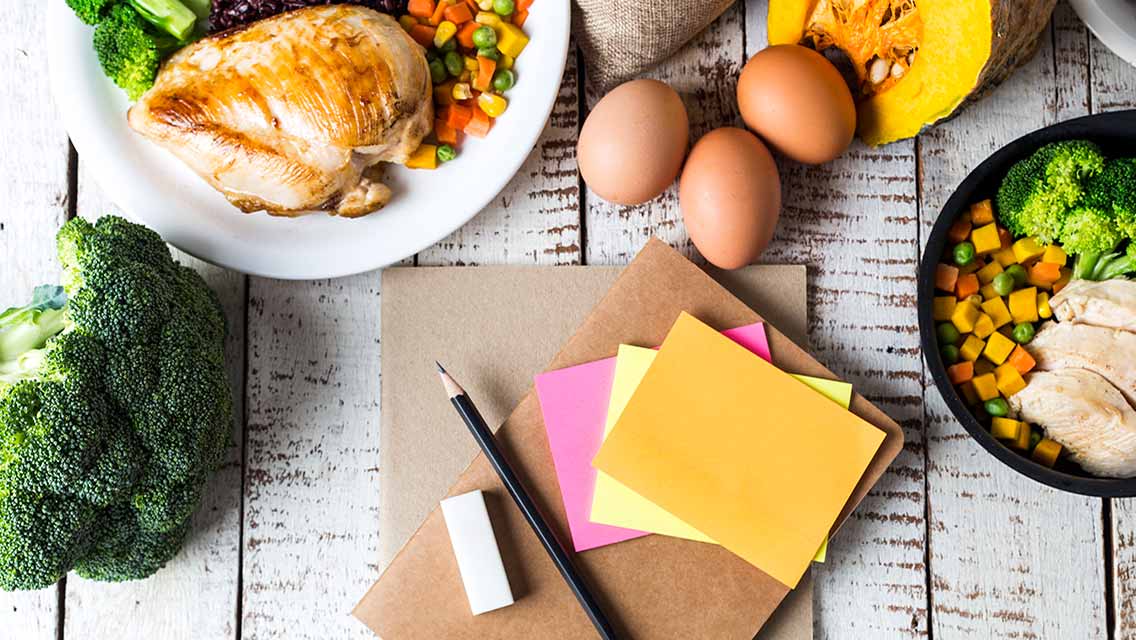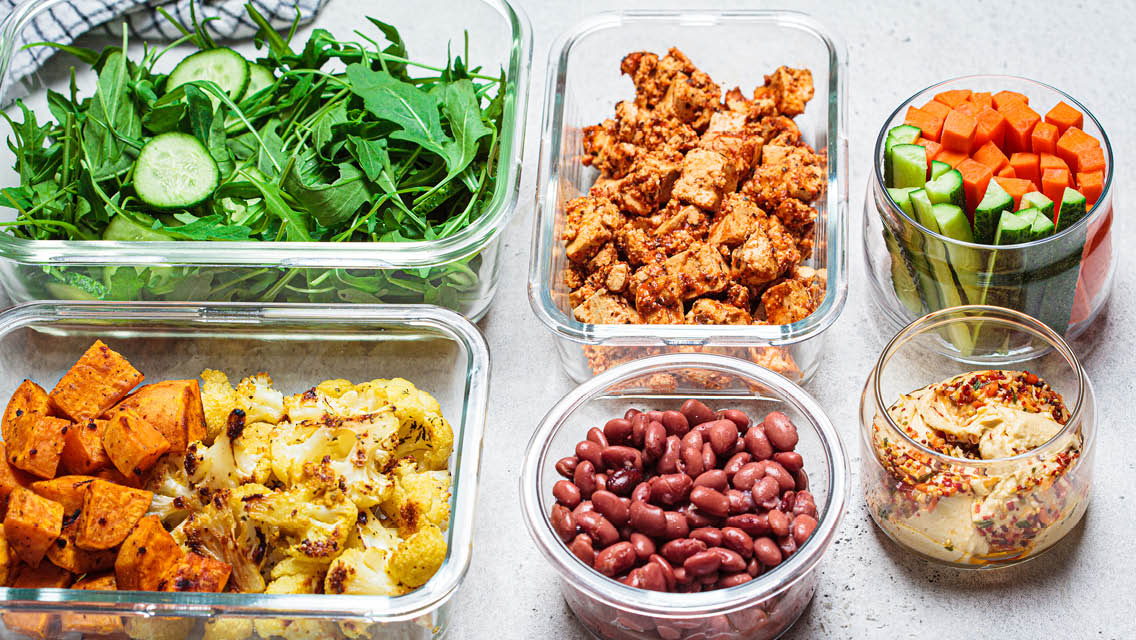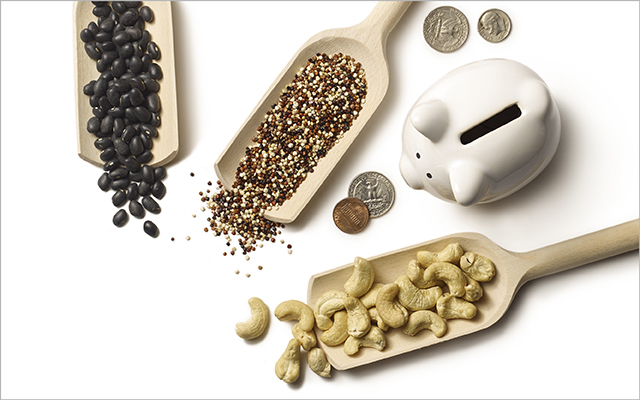Whether you’re following a food protocol or simply aiming to eat more vegetables, intentional menu planning and ingredient prepping can make a big difference in your healthy-eating journey.
So, we asked you: What are your best tips, tricks, or tools for making meal-planning a breeze?
Here’s what you had to say.
1. Prep meals you will actually eat!
— Rebecca M.
2. I shop once a week. Before I shop, I plan out six meals for the week (leaving one night for dinner out or leftovers). I then make my shopping list based on those six meals. I assign the particular night for each meal after I review the nightly activities (work schedules, kids’ activities, etc.) and the weather for the week (e.g., if I’m grilling, I don’t want to do it in the rain or use the oven if the AC is running). I keep all my meal plans in a notebook so I can go back to get ideas when I’m stuck, or get seasonal ideas since it is important to cook with what’s in season.
— Christine S.
3. I have a “master meal list” in my phone notes to help with ideas. I shop every Sunday for the whole week — and also do a leftovers night or night out.
— Teresa S.
4. I keep a well-stocked pantry and freezer so if plan A fails because I need to work late, I have plenty of healthy plan-B options that are quick and easy.
— Deborah E.
5. A well-stocked pantry (including spices, condiments, and sauces), and lots of crossover recipes. Crossovers are recipes that have many of the same main ingredients that may easily be altered through shifts in quantity and changes in flavorings. I also cook for now and cook for later. A large baking dish can hold chicken breasts marinated with Italian seasonings and some with Mexican flavorings. Serve one batch and freeze the other (or simply have the next night). Bon appétit!
— Shelley B.
6. Only buy food you want to (not should) eat
— Reyma M.
7. We ask our kids which foods and meals sound good to them for the week so they can be a part of meal planning, shopping, and cooking. They tend to eat more healthy choices then, too.
— @cocoaandchampagne
8. Buy in bulk — three to four different proteins, carbs, veggies (depending on your goals). Cook in healthy fats or dress up after (like adding avocado). Have containers to help portion for enjoyment throughout the week. Put on some good tunes or a podcast to listen to while getting to work.
— @lindzmarielife
9. To add more fresh vegetables to our family’s meals, I prepare fresh greens and store them between paper towels in a salad spinner. Carrots, radishes, and celery are stored in ice water in the refrigerator, making the base of a salad ready to prepare in moments.
— @fitannimal
10. Every Sunday I sit down and look through my refrigerator and freezer and make a list of things that need to be eaten so nothing goes to waste. Then I follow this plan: Monday: Mexican; Tuesday: Italian; Wednesday: One Pot; Thursday: Leftovers; Friday: Fish; Saturday: Soup or Salad; Sunday: Southern. I’ve tried lots of meal plans, etc., but this one is simple, provides variety, and is kid- and parent-approved in our house!
— @clependu
11. I menu-plan weekly, with a glass of wine, a night or two before shopping or ordering grocery pickup. I look through Pinterest and recipe books and enjoy the process. Try maybe one new recipe. I look at the calendar for nights I need easy and quick and the nights I have a bit more time, to plan accordingly. I am a planner and enjoy the process.
— @deb_resch_stafford
12. On Sundays at the grocery store I buy sliced turkey from the deli, lettuce, cucumbers, and tomatoes, cheese sticks, and fruit for five days. After I get home I make salads in five Ziplocs and refrigerate everything in meal stacks. Every morning one stack goes in my lunch bag. Easy-peasy!
— @cathie.a.brown
13. My husband likes a big salad with dinner every night, complete with two kinds of lettuces, tomatoes, celery, carrots, red pepper, green and black olives, etc. I make them two at a time to save a little time. It’s just easier to make two because I have all the ingredients out.
— @bones0313
14. I buy veggies and fruits based on what’s in season, and each week I buy two cuts of chicken (legs and thighs), fish (salmon and tilapia or cod), organic ground beef (for nachos, meatballs, or meat sauce), and a nice cut of steak (filet mignon or New York strip). I always have tuna in the pantry. I base our weekly menus on this. One day I’ll make drumsticks with garbanzo beans, another day a nice steak with roasted veggies, and another day fish with tartar sauce and a salad. Or if we feel lazy, I’ll just fix some tuna (with lime, tomatoes, a bit of mayo, cilantro) paired with white rice, black beans, and avocado slices. Simple, economic, filling, and nutritious meals. We have chickens so we eat lots of eggs; they are very versatile as well.
— @marcela_dancefit
15. Food is life in our house. My husband and I take turns meal-planning every week. The person who plans the menu makes the grocery list and shops that Sunday. We use Pinterest for inspiration and organization. We have a board called Weekly Grub, and we put meals there so either of us can refer to it if we’re cooking dinner. I personally stick to a method of two nights of fish, one or two nights of tofu or other meatless protein, one night pasta, one night salad or chicken, and we save one weekend night for eating out or takeout since we’re on the go. We always cook fresh, use what we have, and try to select meals the kids will love, too.
— @crystalynnzz
16. I think about which staples I already have on hand and build a balanced meal with those things (supplementing as needed with fresh and/or specific ingredients). I honor my cravings and try to honor the seasons as well. I like to build balanced meals using a base such as grains or greens and then add veggies, fruits, healthy fats, and protein.
— @nutridition
17. Bake or roast instead of sautéing. Instead of standing at the stove, you press a timer and can do other things.
— Deborah M.
18. I cook a lot of meat — for instance, chicken — at one time, then shred it and freeze it to be used in a variety of dishes.
— Mary Ann K.





This Post Has 0 Comments